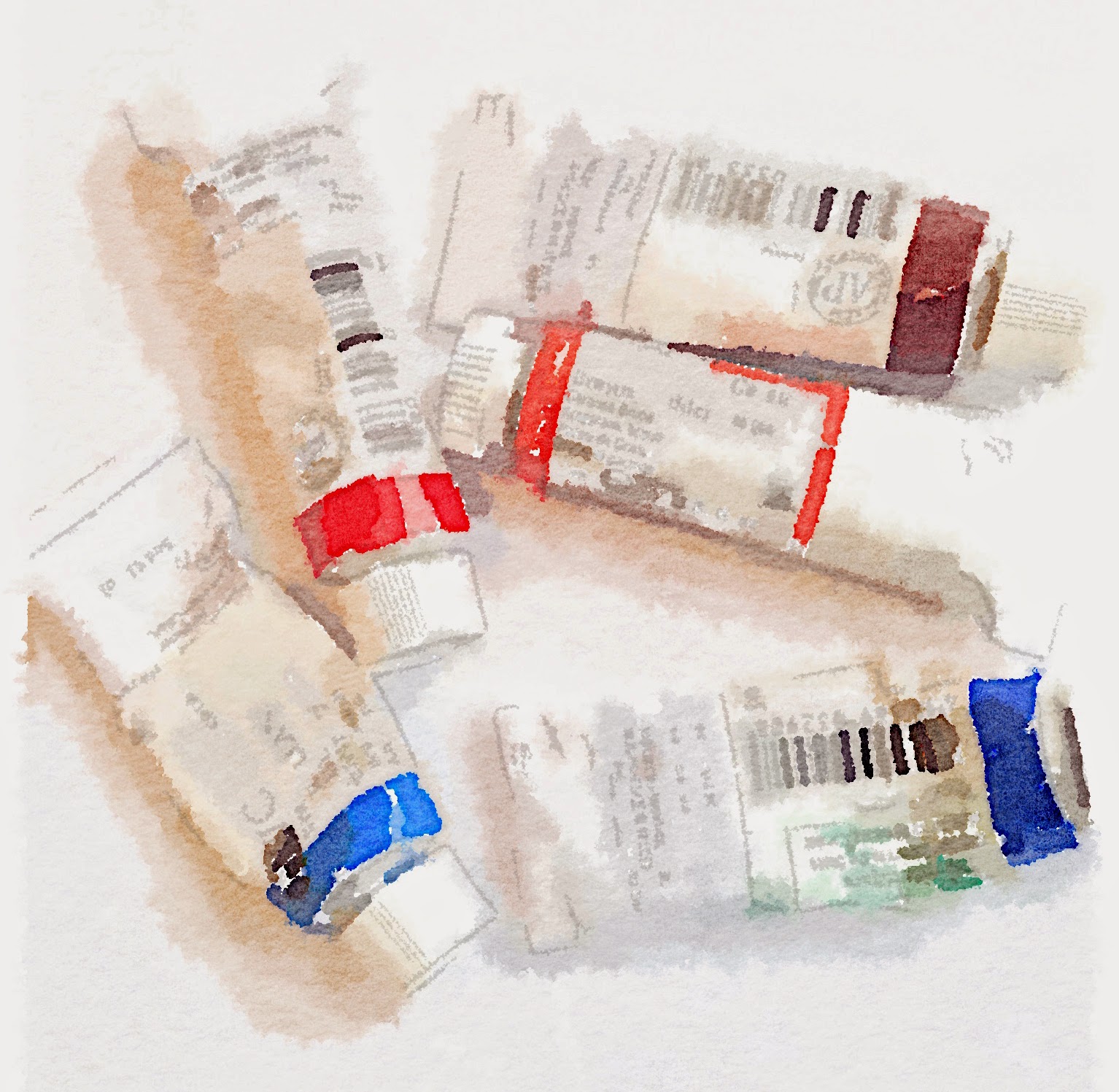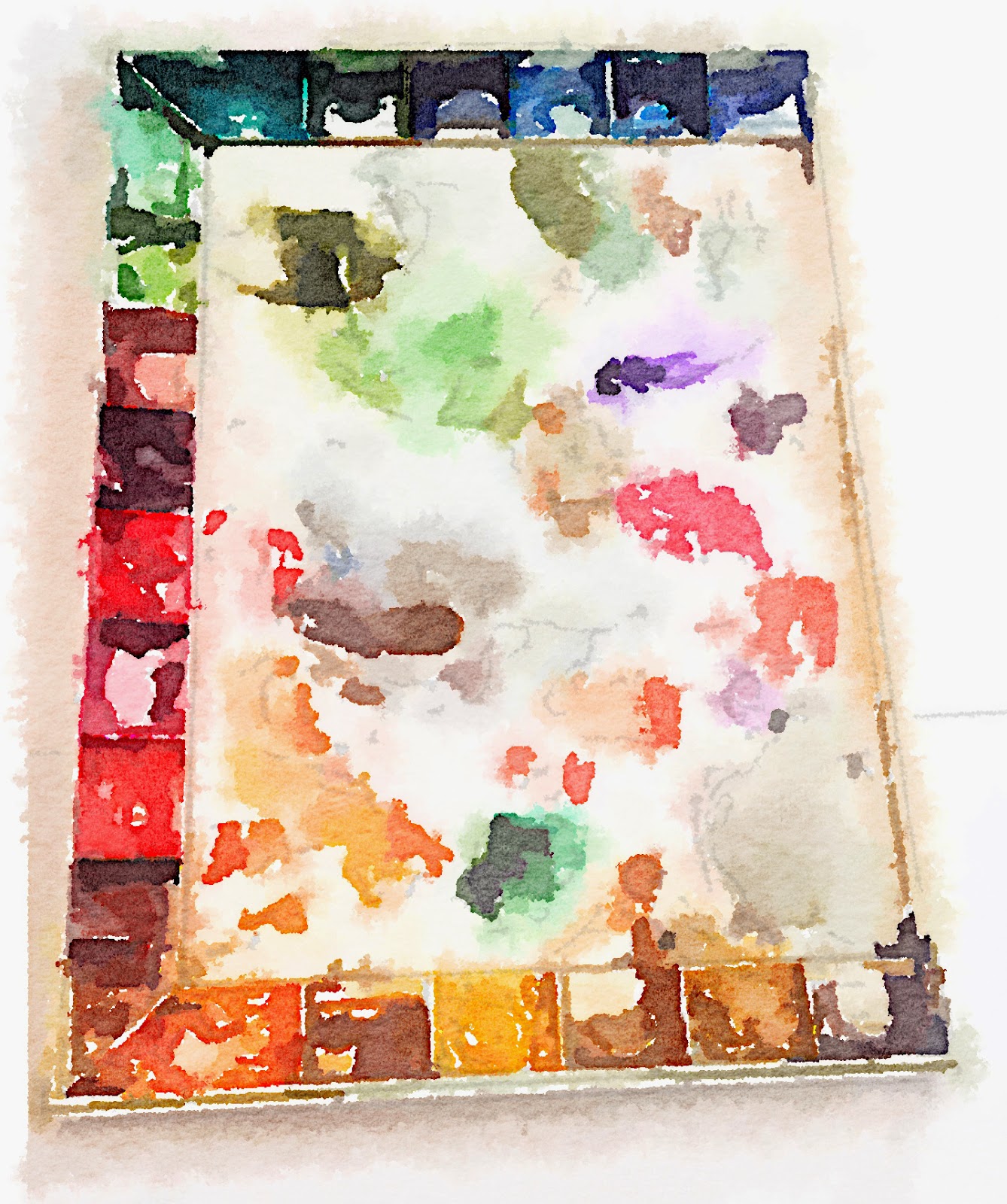Twenty Questions: How to Critique Art
 |
| Mind the four C's for critiquing art |
Technique Time by Miriam Schulman, @schulmanArt
When teaching watercolor classes I notice that over and over again the same problems recur in my students paintings. I thought to help them I would compile a list of questions to ask yourself.
The Four C's
Although there are twenty questions on the list, they basically boil down to the four C's: content, composition, colors and contrast.Content
For content, this is something that comes up even though I tend to bring my students reference photos. They need to ask themselves...what are you drawn to? What inspired you? If you are not inspired by the initial subject, chances are your painting will also be uninspired. Moreover, the artist must always keep in mind what is important about the subject and why they chose it. For example, if they chose a duck painting they shouldn't put endless time and detail into the grass around the ducks.
 |
| Watercolor tubes.... |
- Does it have meaning?
- Is it interesting?
- Why did you paint it?
- Is it in your own style?
- Is there an element of surprise?
- Does this painting say something new about the topic?
Composition
Composition problems occur when artist fail to see how shapes in the painting connect. For example, instead of painting four separate flowers, a painting is better served painting overlapping flowers. Another common problem is not to use the whole paper and to paint their subject only in the center.- Do the shapes work well together?
- Do the shapes connect?
- What is the center of interest? (ie does the view know where to look?)
- Are there competing centers of interest?
- Are there areas of detail and interest?
- Are all parts of the paper considered?
- Is the subject correctly scaled to the size of the paper?
 |
| watercolor palette... |
Colors
Colors is an area where rules can most easily be broken. There needs to be a harmony of colors throughout without having large areas of uninterrupted color changes.- Is there harmony between foreground colors and background colors?
- Is there enough color change in large areas?
- Are there enough neutrals ( grays or mud) to show off colors?
Contrast
Finally, but perhaps most importantly is consideration of contrast. This area is so important that I will encourage my students to create thumbnail studies to have a plan of lights and darks. Too many paintings get "ruined" when everything is painted with the same mid-toned values and you can't "see" the subject. Another problem is when there is a high contrast that is not the center of interest that draws the eyes away from the main story.- Are the values easy to read?
- Can shapes be distinguished because values in adjacent shapes vary?
- Are the light and dark patterns pleasing?
- Is the greatest area of contrast the center of interest or does it take your eyes elsewhere?
How to Critique Your Own Painting.pdf
You can download and print out the checklist for critiquing you own painting. If you want more painting tips you can check out my tutorials on youtube and also my watercolor classes on the Inspiration Place! Other posts you might like are: